
Where is Mount Kilimanjaro? Location & Climbing Guide
Where is Mount Kilimanjaro? Location & Climbing Guide
Mount Kilimanjaro stands as a beacon of adventure and wonder — Africa’s tallest peak, rising proudly in Tanzania. Known around the world as Mount Kilimanjaro, this legendary mountain is a dream destination for many travelers. But you may be wondering: Where is Kilimanjaro exactly? Nestled in northeastern Tanzania near the border with Kenya, Mount Kilimanjaro dominates the horizon. Its snow-capped summit is visible from miles away, an unforgettable sight for anyone lucky enough to see it.
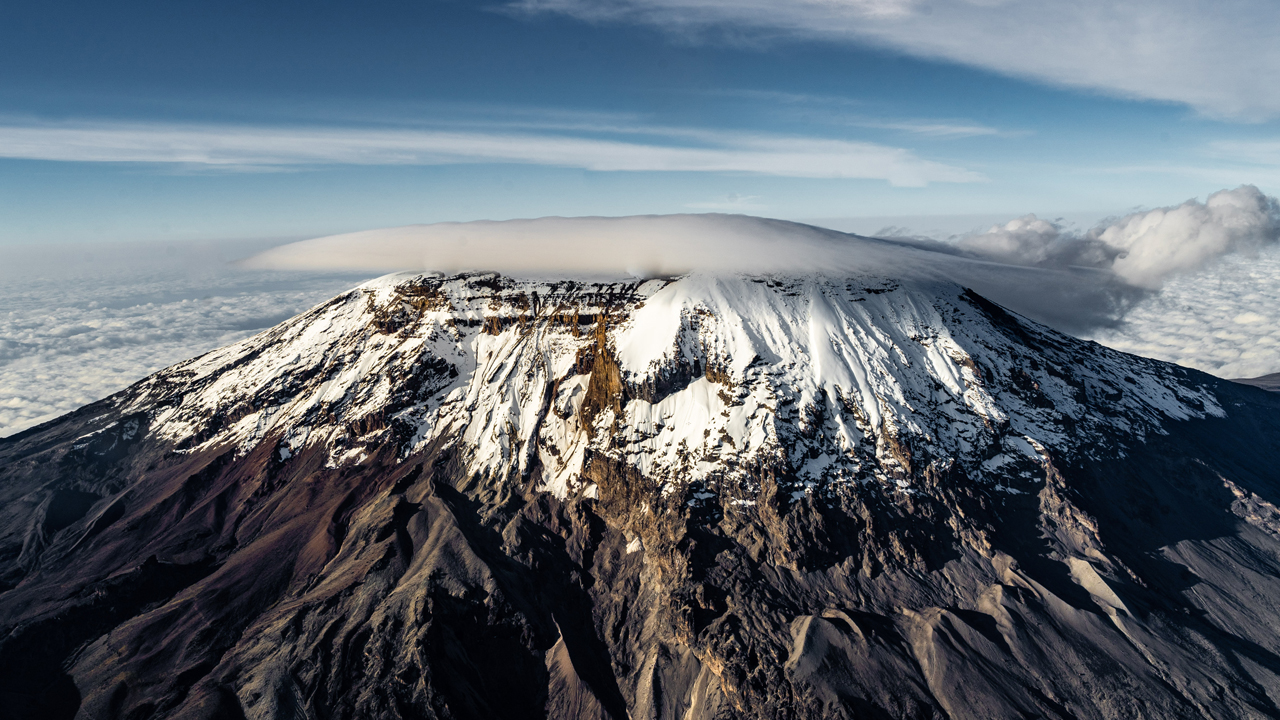
For those asking, “Where is mt Kilimanjaro in Africa?”, it lies within Kilimanjaro National Park, a UNESCO World Heritage Site teeming with natural beauty. More than just a mountain, Kilimanjaro is a symbol of both challenge and triumph. The slopes lead you through different ecosystems. You will see everything from green rainforests to dry alpine deserts. Each step shows you a new and interesting landscape.
Climbing Mount Kilimanjaro is no small feat. It’s a test of endurance, preparation, and spirit. But the reward is unforgettable: reaching Uhuru Peak, the “Roof of Africa.” If you’ve ever heard of mountain Kilimanjaro and found yourself asking, “Where is Kilimanjaro located?”, now you know — and perhaps, like so many before you, you’re ready to make the climb with Safari Soles Tours as your trusted guider.
Join us as we explore Kilimanjaro's location, height, and climbing routes. Discover why this mountain is a bucket-list destination for adventurers worldwide. Your journey to Kilimanjaro begins here.
Where is mt kilimanjaro located in africa
Mount Kilimanjaro proudly rises in Tanzania, East Africa. It stands near the border with Kenya, dominating the vast plains below. Unlike most mountains, Kilimanjaro is a free-standing peak. It is not part of a range, making its imposing figure even more remarkable. Tanzania, home to this natural wonder, is known for its rich biodiversity and vibrant cultures. Kilimanjaro's location adds to the allure of visiting Tanzania. Geographically, Mount Kilimanjaro sits close to the equator. Yet, its snow-capped summit challenges the tropical stereotype with persistent ice. Mount Kilimanjaro's latitude and longitude are roughly 3.0759° S and 37.3531° E. This precise positioning helps adventurers plan their pilgrimage to the peak.
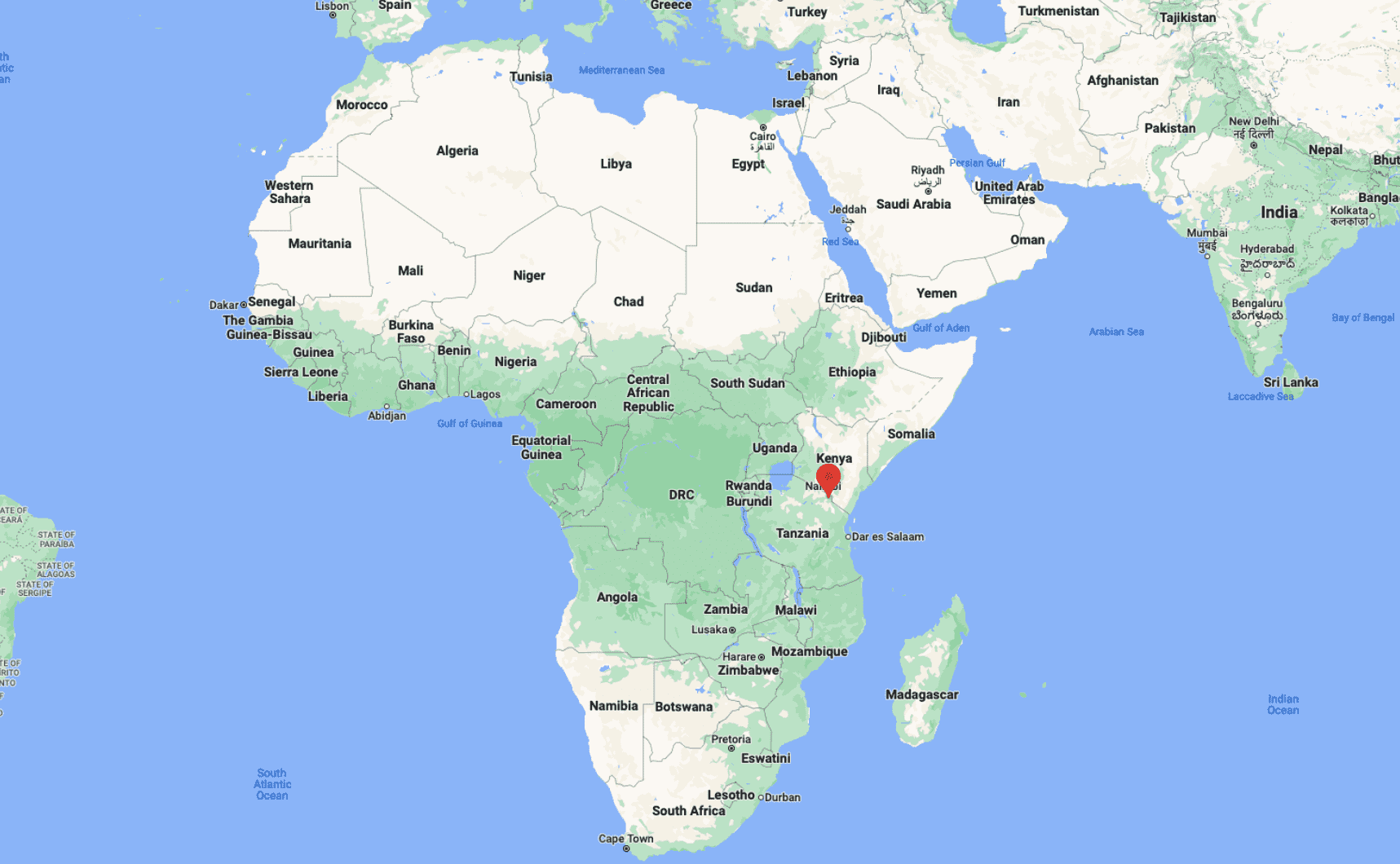
To visualize Kilimanjaro's place in the world, consider it located at the crossroads of adventurous dreams.
- Country: Tanzania
- Continent: Africa
- Nearest Major City: Moshi, Tanzania
- Proximity to Kenya: Approximately 20 miles from the border
This iconic mountain sits within Kilimanjaro National Park. The park is a treasure trove of natural beauty and biodiversity.
As a UNESCO World Heritage Site, Kilimanjaro draws visitors from around the globe. Its location makes it accessible yet remote—a perfect blend for explorers.
This mighty mountain is more than just a landmark. It is a journey, a challenge, and a triumph waiting to be conquered.
Mount Kilimanjaro Height: How Tall is Africa’s Roof?
Mount Kilimanjaro stands as Africa's tallest peak. It reaches an impressive 5,895 meters (19,341 feet) above sea level. This towering height earns Kilimanjaro its nickname, "The Roof of Africa." It is a title that befits its prominence on the continent's landscape. Unlike other mountains, Kilimanjaro's ascent does not require technical climbing skills. However, its height poses a significant challenge to trekkers.
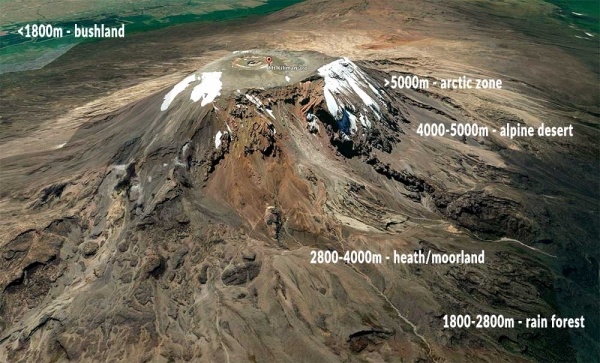
To fully grasp Kilimanjaro's size, consider its vertical scale compared to well-known structures. Visualizing these comparisons underscores the mountain's grandeur:
- Mount Kilimanjaro: 5,895 meters (19,341 feet)
- Mount Everest: 8,848 meters (29,029 feet)
- Burj Khalifa: 828 meters (2,717 feet)
- Empire State Building: 443 meters (1,454 feet, including antenna)
Kilimanjaro's height is not only an attraction but also a test of endurance for those who dare to climb. The air grows thinner and colder as you ascend toward the summit.
Such an altitude requires careful acclimatization. It presents both a physical and mental challenge that prepares climbers to savor the triumph at the top.
Reaching the summit offers unparalleled views and the feeling of standing on the pinnacle of Africa. It is an experience that is unforgettable and transformative.
Kilimanjaro’s Volcanic Origins: The Three Cones and Their Mystique
Mount Kilimanjaro is not only the tallest free-standing mountain in the world but also a testament to Earth's ancient volcanic activity. Its looming presence is built from layers of volcanic material.
Kilimanjaro is composed of three distinct volcanic cones: Kibo, Mawenzi, and Shira. Each cone has its own unique characteristics and history, contributing to the mountain's overall mystique.
Kibo is the highest and youngest of the three cones. It is the most visited by climbers aiming for Uhuru Peak, and it houses the iconic glaciers.

Mawenzi, the second tallest peak, is rugged and less accessible. Its serrated peak presents a formidable challenge reserved for seasoned climbers with technical expertise.
Shira is the oldest cone, long extinct, and now a plateau that hosts unique moorland ecosystems. Its ancient lava flows are a constant reminder of Kilimanjaro's fiery past.
The three cones illustrate an intriguing geological timeline:
- Kibo: Still exhibiting slight volcanic activity, with occasional fumaroles.
- Mawenzi: A deeply eroded, craggy peak, providing spectacular views.
- Shira: A collapsed caldera, now a wide plateau perfect for trekking.
Each cone adds to the mountain's enigmatic allure, offering different landscapes and challenges for those who dare to explore its vast terrain. Visitors to Kilimanjaro are drawn not only by its height but by its volcanic heritage.
Kilimanjaro’s Unique Ecosystems: From Rainforest to Arctic Summit
Mount Kilimanjaro is a masterpiece of ecological diversity, with each step up its slopes revealing a new world of life. This iconic mountain is a natural showcase of ecosystems, changing dramatically from base to peak. At the lower elevations, lush tropical rainforests envelop the mountain, teeming with life. Here, you'll find towering trees and vibrant undergrowth, home to creatures like colobus monkeys and colorful birds.
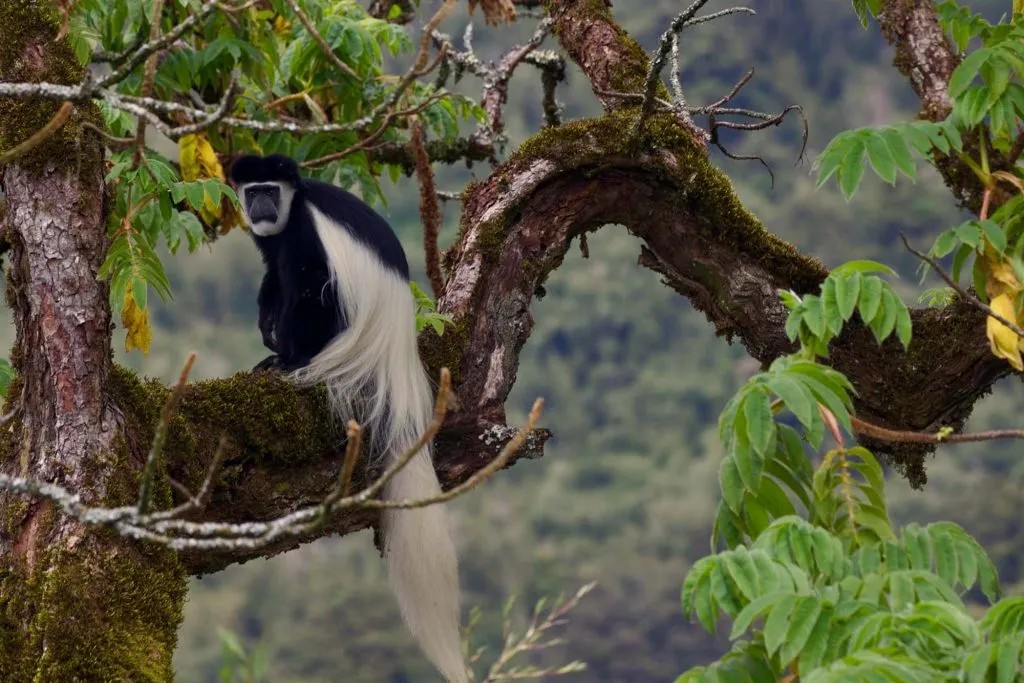
As you ascend, the rainforests give way to heath and moorland. This zone is characterized by large heathers and plants like giant groundsels and lobelias, creating a surreal landscape under a vast sky. Higher up, the landscape transforms into alpine desert. This area experiences extreme temperatures and harsh conditions, a stark contrast to the lush green below. Hardy shrubs and grasses are scattered sparingly, resilient against the odds. The final stretch to Kilimanjaro's summit is an arctic zone, where icy winds sweep across rocky terrain. The bare, glacial cap is both stunning and stark, a testament to nature's power.
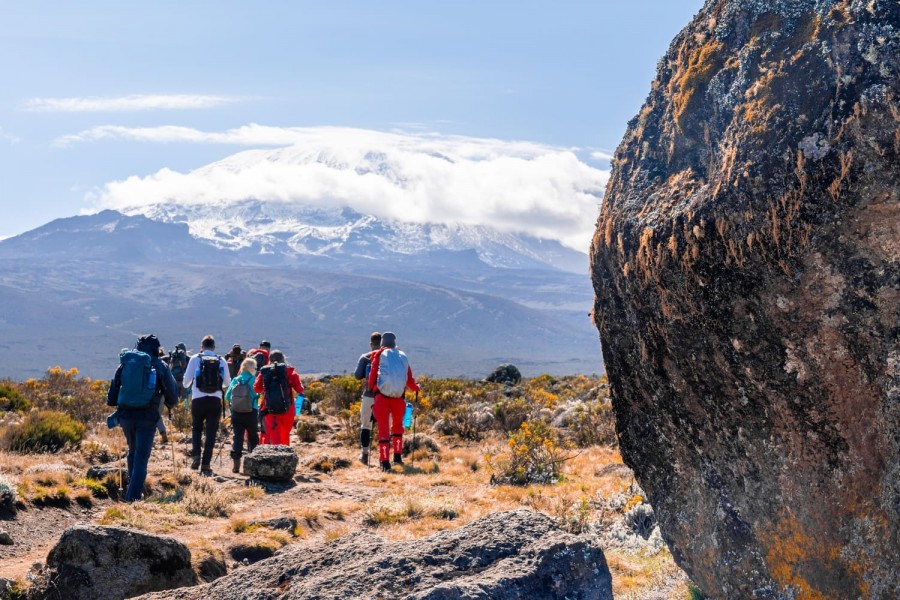
These ecosystems, listed from base to summit, offer a glimpse into Kilimanjaro's diversity:
- Rainforest: Lush and vibrant, rich in biodiversity.
- Heath and Moorland: Enigmatic with giant plant forms.
- Alpine Desert: Barren and wind-swept, with sparse vegetation.
- Arctic Summit: Cold, desolate, and breathtakingly beautiful.
Kilimanjaro's ecosystems are a microcosm of nature's adaptability and beauty, drawing adventurers into a world of contrasts. Every step upward reveals new wonders in this climber's paradise.
Wildlife and Flora: Life on the Slopes of Kilimanjaro
Mount Kilimanjaro, with its varied ecosystems, hosts a remarkable array of wildlife and flora. Each zone supports different life forms, adapted to the mountain's unique conditions. In the lush rainforests at the mountain's base, wildlife flourishes. Here, colobus monkeys swing gracefully through the canopy, their black-and-white coats striking against the green backdrop. Elephants occasionally roam these lower forests, leaving paths in their wake.
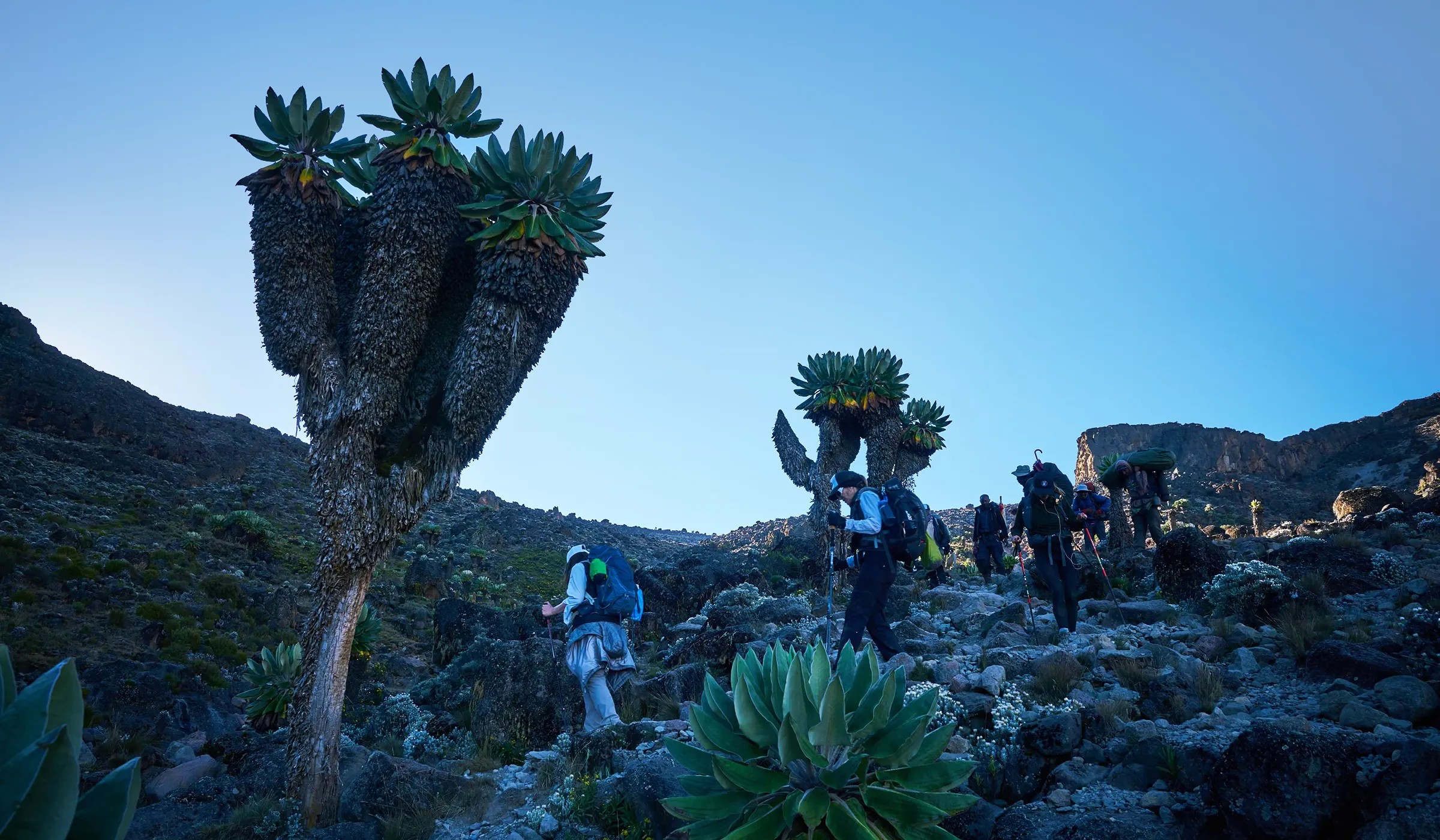
As the altitude increases, plant life adapts to harsher conditions. Giant lobelias and groundsels dominate the heath and moorland regions, their sizes a striking adaptation. These plants have evolved to capture and store water for survival in the cooler, breezier environment.
Bird enthusiasts will find the mountain's slopes a lively stage. Vibrant sunbirds flit among the flowers, while the alpine zone's rugged terrain is home to the fascinating lammergeyer, or bearded vulture, soaring high above.
The mountain’s rich flora includes unique species, vital to the ecosystem:
- Colobus Monkeys: Agile acrobats of the rainforest.
- Giant Lobelias: Adapted for harsh health conditions.
- Sunbirds: Jewel-like inhabitants of flowering zones.
- Elephants: Occasional visitors to the lower forests.
These ecosystems interact intricately, displaying a vibrant and complex tapestry of life on Kilimanjaro's slopes. The mountain’s ecological richness enchants and educates, inviting visitors to pause and appreciate.
Cultural Significance: Kilimanjaro and the Chagga People
Mount Kilimanjaro holds deep cultural resonance for the indigenous Chagga people. Their lives are interwoven with the mountain's presence, seen as both protector and provider.The Chagga, who inhabit the fertile slopes, have cultivated the land for generations. They grow bananas and coffee, staple crops nurtured by the mountain's mineral-rich soils. Kilimanjaro's waters also sustain these communities, flowing down as life-giving rivers and springs.
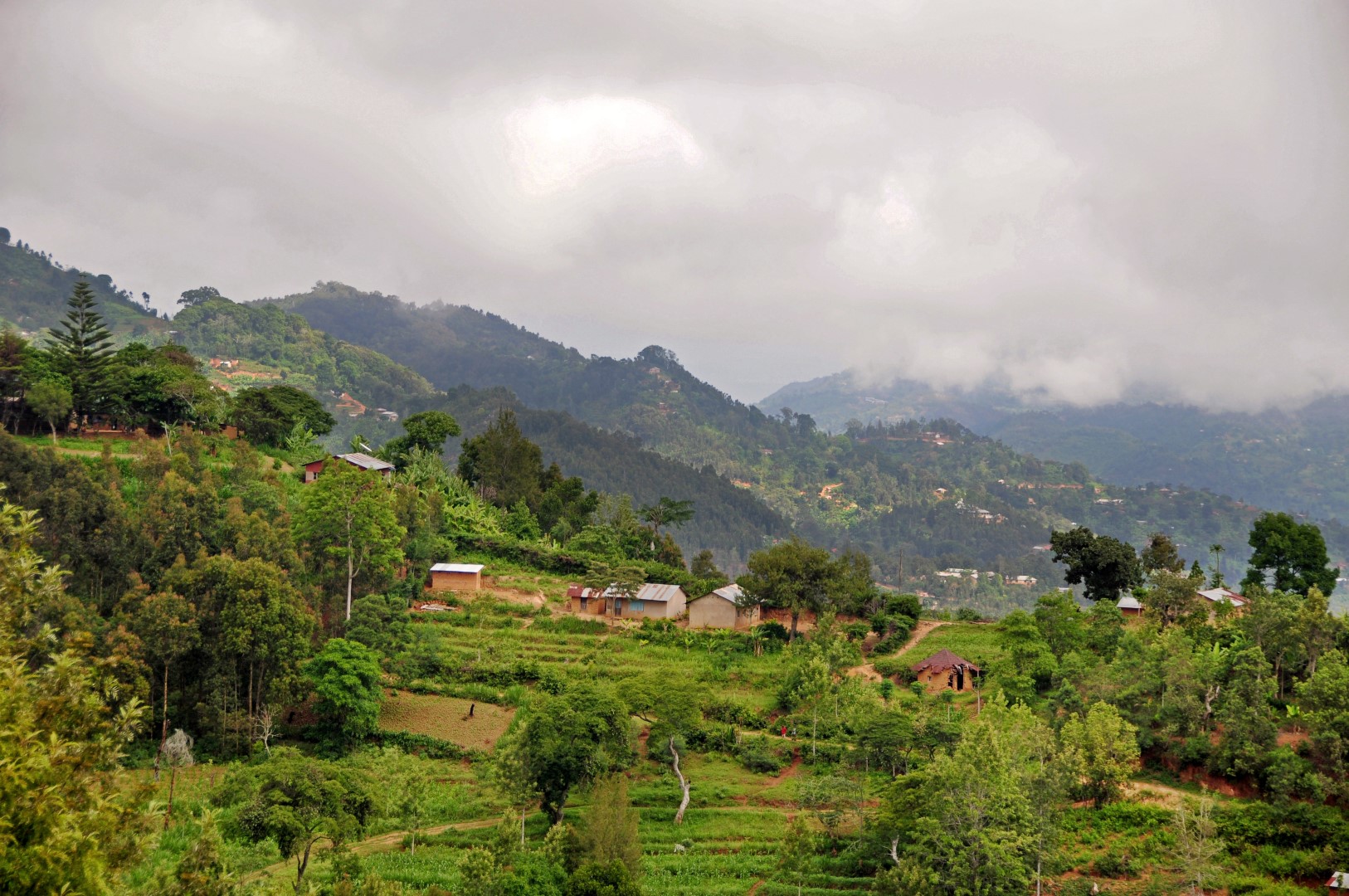
Kilimanjaro is not just a geographical landmark but a spiritual beacon. The Chagga believe it is home to ancestral spirits. This spiritual connection fosters respect and reverence for the mountain's natural beauty and resources.Visitors, guided by the stories and wisdom of the Chagga, find their journey enriched. Sharing in local customs and traditions deepens their experience of Kilimanjaro's majestic environment, bridging cultures through shared admiration.
Climbing Mount Kilimanjaro: Routes, Duration & Difficulty
Climbing Mountain Kilimanjaro is a bucket-list adventure, offering various routes catering to different preferences and abilities. Each route has its unique charm and challenges, allowing climbers to select their ideal path.
- The Marangu Route, often called the "Coca-Cola Route," is the most popular. It is the only path with hut accommodations, and the climb typically takes 5 to 7 days. This route is deemed easier but offers less acclimatization.
- The Machame Route, known as the "Whiskey Route," is favored for its scenic beauty. It takes 6 to 8 days to complete, presenting a more challenging trek with diverse landscapes. This route is ideal for those seeking panoramic vistas and varied terrains.
- The Lemosho Route provides a remote experience, with fewer crowds. Taking around 7 to 9 days, it allows for excellent acclimatization, increasing summit success rates. This path is favored for its tranquility and opportunity for solitude.
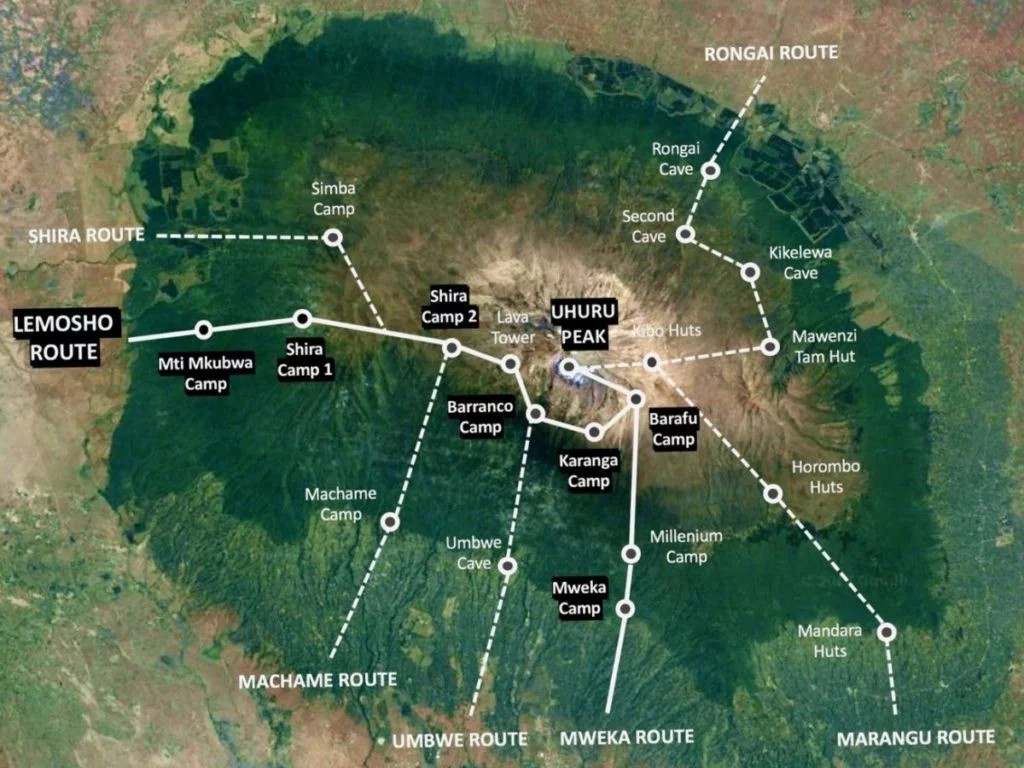
For an alternative perspective, the Rongai Route approaches from the north, near the Kenyan border. Climbers can complete this less crowded path in 6 to 7 days. It is known for stunning views and a chance to spot wildlife. The Northern Circuit, the longest route, offers unparalleled acclimatization and breathtaking landscapes. Usually completed in 9 to 10 days, it provides a comprehensive Kilimanjaro experience, best suited for those with time and patience.
- Marangu Route:
- 5 to 7 days
- Hut accommodations
- Less acclimatization
- Machame Route:
- 6 to 8 days
- More challenging
- Scenic beauty
Choosing the right route depends on your fitness level, experience, and what you wish to achieve from the climb. Safari Soles Tours offers expert guidance to match adventurers with their ideal trail.
No matter the route, reaching the summit requires determination, as Kilimanjaro's conditions can be demanding. Expect steep inclines, chilly nights, and high altitudes. Yet, the rewards of standing atop Africa's highest peak make each step worthwhile.
Climbing Kilimanjaro is more than an ascent; it's a journey of inner exploration. With Safari Soles Tours, you'll embark on an unforgettable adventure, equipped with knowledge, support, and a spirit of discovery.
How Long Does It Take to Climb Mount Kilimanjaro?
The duration of a Kilimanjaro climb varies based on the route chosen and the rate of acclimatization. On average, the trek can last anywhere from 5 to 10 days.
Shorter treks, like the Marangu Route, can be completed in 5 to 7 days. However, these often offer less time for acclimatization, which may impact summit success rates. Opting for a longer trek can significantly improve your chances of reaching the top.
- Marangu Route: 5 to 7 days
- Machame Route: 6 to 8 days
- Lemosho Route: 7 to 9 days
- Rongai Route: 6 to 7 days
- Northern Circuit: 9 to 10 days
Choosing a route with a longer itinerary not only enhances your adjustment to high altitudes but also enriches your overall experience. With Safari Soles Tours, each journey is tailored to balance adventure with safety, allowing for the most rewarding ascent.
When is the Best Time to Climb Kilimanjaro?
The best time to climb Mountain Kilimanjaro is during the dry seasons. These periods offer clearer skies and more predictable weather, enhancing both safety and experience.
From January to March, the mountain is less crowded, offering a quieter climb with cooler temperatures. June to October is another ideal window, marked by warmer weather and dry conditions.
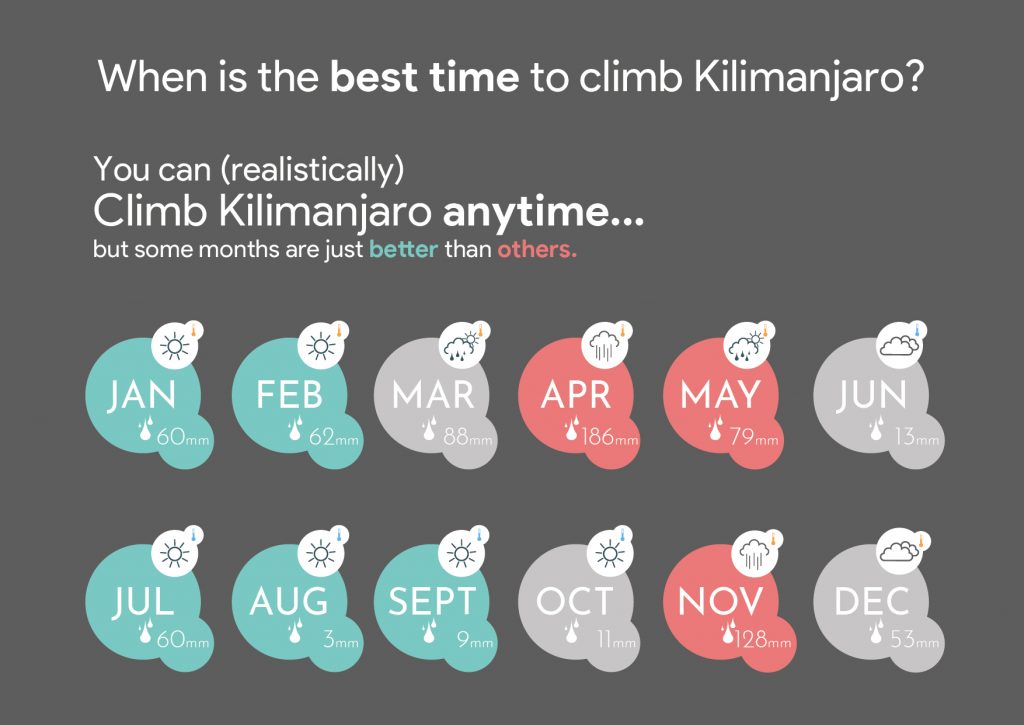
Here's a quick summary:
- January to March: Less crowded, cooler weather
- June to October: Warmer, busier
Each season presents its own unique beauty, from blossoming alpine flora to breathtaking, snow-capped views. No matter when you choose to embark on this adventure, Safari Soles Tours ensures meticulous planning and expert guidance. Whether you seek solitude or vibrant mountain trails, there's a time for everyone to climb Kilimanjaro.
What to Expect: Weather, Altitude, and Acclimatization
Mount Kilimanjaro's weather can be unpredictable, with rapid changes as you ascend through different climate zones. You’ll experience everything from tropical warmth to freezing alpine conditions. Altitude presents a significant challenge, as the air thins and oxygen levels decrease the higher you climb. Many adventurers face altitude sickness, which underscores the importance of acclimatization. Acclimatization is crucial for a successful summit attempt. Ascending gradually allows your body to adjust to the reduced oxygen, minimizing the risk of sickness. Listen to your body and don't rush the climb.
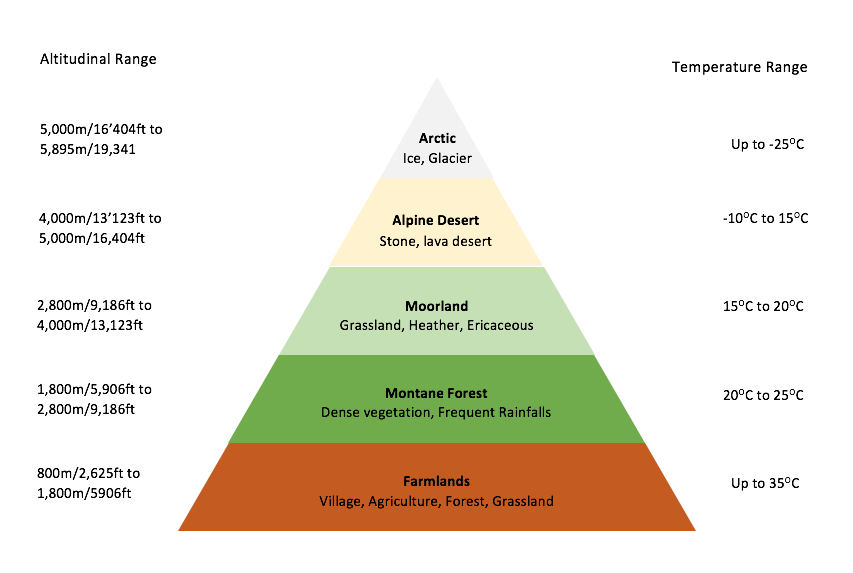
Here's what to expect:
- Weather: Varies from hot to freezing
- Altitude: Decreases oxygen levels
- Acclimatization: Essential for success
Proper preparation and being mindful of your body's signals can make all the difference. Safari Soles Tours prioritizes safety, offering guidance on how best to adapt to these conditions. With the right approach, the harshness of the climb is tempered by the rewards awaiting at the summit.
Safety, Preparation & Responsible Climbing with Safari Soles Tours
Safety is paramount when climbing Mount Kilimanjaro. Your journey to the summit should be not only thrilling but also secure. Safari Soles Tours places a strong emphasis on safety protocols to ensure your well-being throughout the ascent. Preparation begins long before you set foot on the mountain. Our team provides comprehensive pre-climb briefings. These sessions cover essential information about the climb, including equipment checks and the importance of acclimatization.
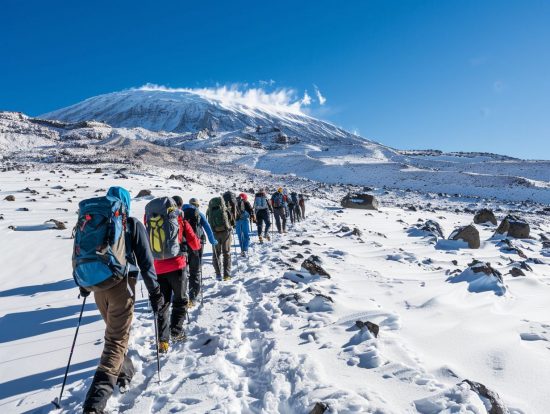
Climbing responsibly is key to preserving Mount Kilimanjaro's natural beauty. Safari Soles Tours is committed to sustainable practices. This includes minimal impact trekking and employing local guides and porters, who are vital to your adventure.
Here’s a quick checklist for a responsible and safe climb:
- Comprehensive Briefings: Essential pre-climb information
- Gear Checks: Ensure reliable and appropriate equipment
- Local Expertise: Trust in experienced guides and porters
- Sustainability: Minimal impact practices
With Safari Soles Tours, you’ll be in capable hands. Our guides are trained in first aid and altitude sickness management, ensuring every step of your journey is supported. Join us for an adventure that’s as safe and responsible as it is unforgettable.
The Summit Experience: Uhuru Peak and the View from the Top
Standing at Uhuru Peak is nothing short of triumphant. This is where exhaustion meets exhilaration. At 5,895 meters above sea level, it's the highest point in Africa.
Reaching the summit is a personal victory and a breath-taking experience. The views from the peak stretch for miles. You'll witness the majesty of the African plains and the mountain's snowy cap under the wide sky. At Uhuru Peak, the cold is sharp, but the sense of achievement is warming. Here, you stand at the "Roof of Africa," surrounded by a panorama that defines awe. Photographs capture the moment, but the feeling stays with you long after descent.
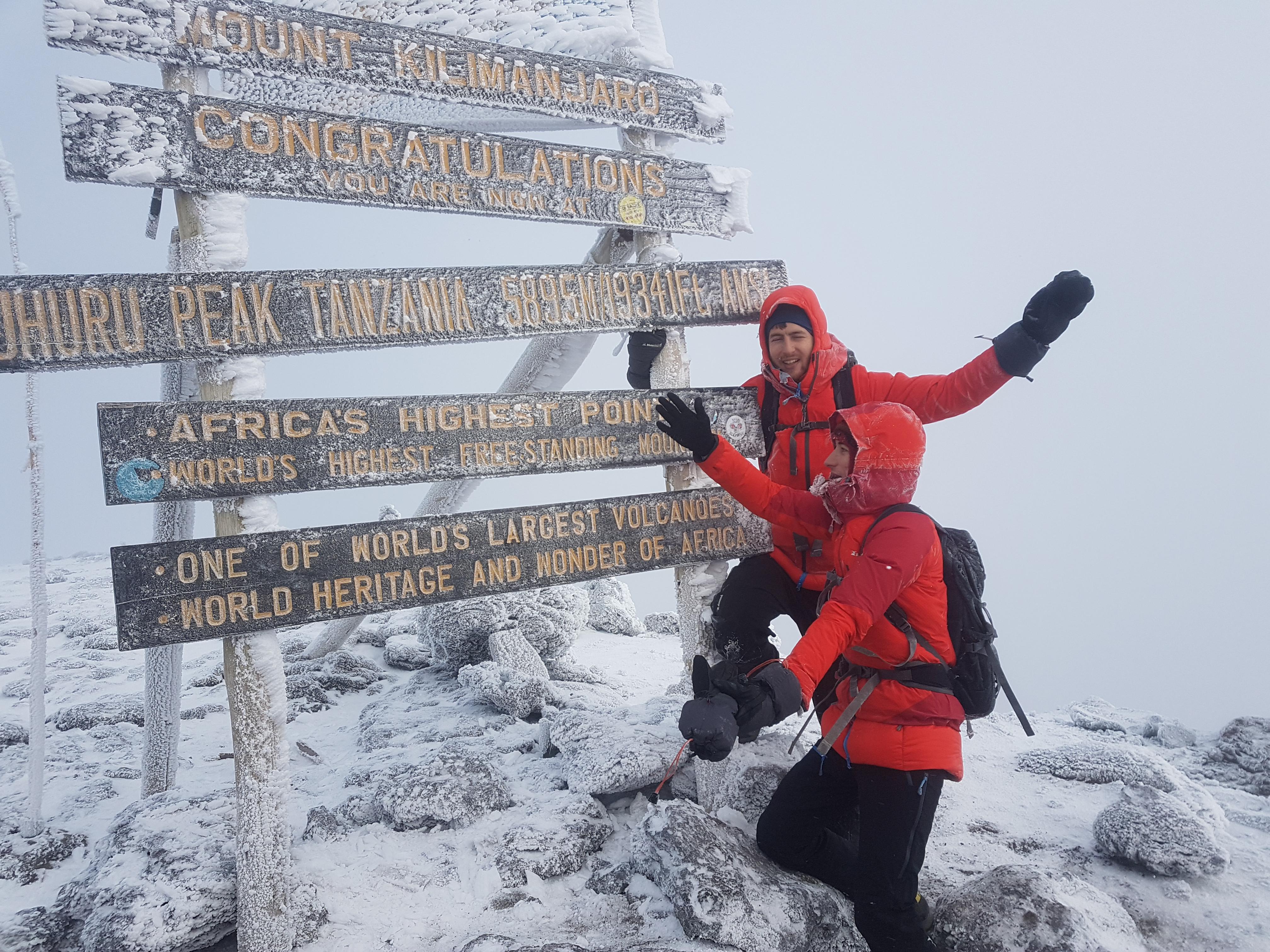
Kilimanjaro in History and Legend
Mount Kilimanjaro is steeped in history and rich in legend. First climbed by Hans Meyer and Ludwig Purtscheller in 1889, the mountain has since become a symbol of endurance and exploration. Its iconic silhouette is recognized worldwide, inspiring countless adventurers.
The local Chagga people weave myths around Kilimanjaro. They speak of the mountain's cap of ice as something that whispers secrets of the past. Such tales add depth to its allure, making Kilimanjaro not just a climb, but a journey through time and spirit.
Why Choose Safari Soles Tours for Your Kilimanjaro Adventure?
Embarking on a journey to the summit of Mount Kilimanjaro is a life-changing experience. To make the most of it, choosing the right partner is crucial. Safari Soles Tours stands out as a trusted ally, rooted in local expertise and a passion for Tanzania's natural wonders. Our experienced guides, native to the region, offer unparalleled knowledge and personalized attention. They share stories of the land, ensuring your climb is rich with cultural insights. Additionally, safety and comfort are our top priorities, providing essential support at each step. We believe in creating unique, tailor-made itineraries that match your ambitions and pace. Whether you seek an adventure or a more measured ascent, we offer paths that align with your personal goals.
Here’s what makes us exceptional:
- Expert Guidance from Local Professionals – Our mountain guides aren’t just trained experts; they are born and raised in the shadow of Kilimanjaro. Their deep knowledge of the terrain, weather, and culture ensures you’re in safe, capable, and friendly hands every step of the way.
- Comprehensive Safety & Acclimatization Support – We take your safety seriously. From thorough pre-trek briefings to well-paced itineraries designed for optimal acclimatization, we prioritize your health so you can focus on the adventure.
- Customized Itineraries for Your Interests – Whether your passion is wildlife photography, cultural encounters, or simply the joy of the climb, we craft a trekking plan that blends your personal interests with the magic of Kilimanjaro.
- Commitment to Environmental Responsibility – We believe in protecting the mountain that gives so much. Our eco-conscious practices and partnerships with local conservation groups help preserve Kilimanjaro for future generations.
When you climb with Safari Soles Tours, you’re not just ticking off Africa’s highest peak from your bucket list — you’re embarking on a deeply personal, fully supported adventure that will change the way you see the world.
Your Kilimanjaro Adventure Starts Here
Mount Kilimanjaro isn’t just a mountain — it’s an invitation to step into a journey that will stay with you forever. From the moment you set foot on its slopes to the triumphant moment you reach its snowy summit, every step is a story waiting to be written.
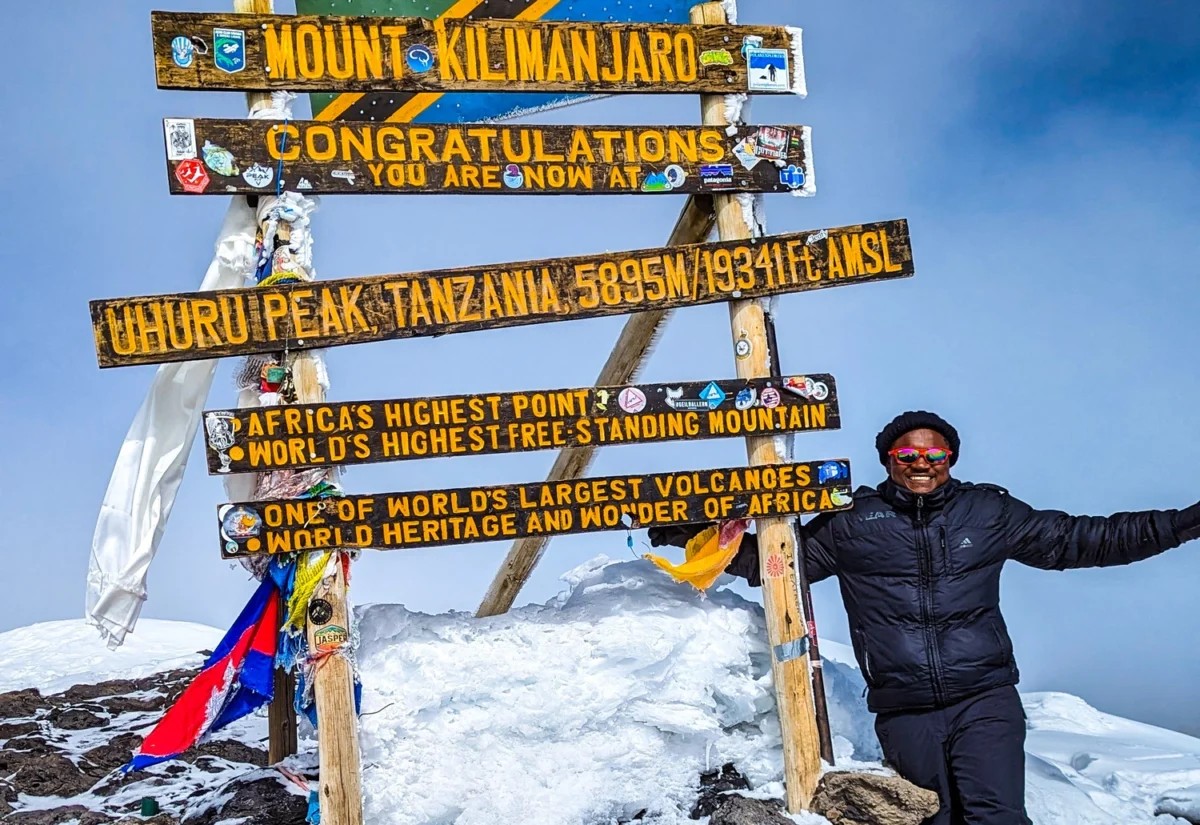
Climbing Africa’s tallest peak is more than a challenge; it’s an immersion into Tanzania’s breathtaking landscapes, vibrant cultures, and extraordinary wildlife. The mountain will test you, inspire you, and reward you with views and memories that few in the world ever experience.
With Safari Soles Tours as your trusted guide, your Kilimanjaro trek will be more than a climb — it will be a carefully crafted adventure filled with authenticity, safety, and unforgettable moments. Together, we’ll take you to the Roof of Africa, where the horizon stretches endlessly, and the sense of achievement is as vast as the view.
Frequently Asked Questions About Mount Kilimanjaro
- Where is Mount Kilimanjaro located?
Mount Kilimanjaro rises proudly in northeastern Tanzania, near the Kenyan border. It looms over the African plains like a solitary sentinel.
Its majestic peak, Uhuru, reaches 5,895 meters (19,341 feet) above sea level, earning it the title of Africa's tallest mountain.
- How long does it take to climb Kilimanjaro?
The climb generally ranges from 5 to 9 days, influenced by the chosen route and one's acclimatization needs.
- What is the best time to climb?
The ideal periods are during Tanzania's dry seasons: January to March and June to October. These times offer clearer skies.
- Do I need technical climbing skills?
Fortunately, no technical skills are needed. However, physical fitness and mental preparation are essential for success.
- What routes are available?
Options abound, from the popular Machame and Marangu routes to the less-trodden Lemosho and Rongai paths, each with unique charms.